VCU Health is still paying for its multimillion-dollar decision to back out of a downtown development deal – and could continue to for the foreseeable future.
The health system this month is due to fulfill a $1.3 million payment to the city, known as a payment in lieu of taxes, as part of its arrangement to exit the project that would have replaced Richmond’s old Public Safety Building.
The annual payment, also called a guaranteed obligation, is the third so far that VCU Health had committed to pay to cover the minimum real estate tax revenue that the $325 million project was anticipated to generate for the city over 25 years.
The obligation payments add to an increasing tab for the health system that is known so far to have reached roughly $80 million. That includes a $73 million defeasance payment to get out of its lease as the project’s master tenant, and a commitment to go through with demolishing the site at an estimated cost of $5 million.
In bowing out as the master tenant, VCU Health agreed to continue making the annual tax payments until the property, at 500 N. 10th St., is sold by the city for future development. The city took back the property in February as part of a defeasance process that wound down the project and required the $73 million project-exit payment.
The annual obligation payments were included in the project’s development agreement to ensure that the city received real estate tax revenue from the site, regardless of how promptly, or successfully, the property was developed. The payments are due on or before June 5 of each respective tax year, according to the 2021 agreement between the city and developer Capital City Partners (CCP).
A spokesperson for VCU Health confirmed late last week that the health system had received a city invoice for this year’s payment. The invoice, which is dated June 8, bills the health system for $1.16 million – the remainder of the $1.3 million that’s due, minus about $135,000 that was paid by the health system in January.
The invoice puts the payment as being due June 15. The spokesperson said VCU Health would pay the balance “in the normal course of business.”
The health system had made the first two obligation payments – $77,000 for tax year 2021, and $546,700 for 2022 – by the time the defeasance process was completed earlier this year.
And its tab could continue to go up, as a path toward an alternative development plan for the site remains unclear.
New plan would take site off city tax rolls
VCU, the university, has said it is now pursuing a new and more expensive project for the Public Safety Building site: a planned $415 million VCU Dentistry Center.
VCU’s Board of Visitors is seeking state funding approval for the project, which would replace the School of Dentistry’s Lyons Dental Building and Dental Building 1 on the nearby MCV Campus. VCU has said the property’s development could potentially also involve a new research building to replace the aging Sanger Hall a block away.
It isn’t clear whether the university would purchase the property from the city, or how soon such a transaction could be completed, potentially keeping VCU Health on the hook for future tax year payments.
State law requires that a state entity own the portion of the property that would house the dentistry school, according to Matt Conrad, vice president of external and government relations for VCU and VCU Health. University ownership would take the 3-acre property off the city’s tax rolls, as VCU is exempt from paying city real estate taxes.
In an interview last month, Conrad said the goal for the dentistry project is for the university to own the property and incorporate uses such as retail that would make at least part of the new building taxable to the city.
But that doesn’t align with what had been the city’s goal with the VCU Health project: to keep the entire real estate taxable and revenue-generating. The original project was shaped to have VCU Health lease a privately owned building so that the property would have remained taxable under that private ownership.
Richmond officials familiar with the city’s position on the matter have said they are open to working with VCU on a deal to make way for the dentistry center but would want any development on the site to generate as much tax revenue for the city as the VCU Health project would have. Such revenue could come from further payments in lieu of taxes that could compensate for any loss of real estate taxability, the officials said.
The competing interests could prolong a potential sale of the site, as could state approval of capital funding for the project.
VCU last year secured $250,000 in state funding for a pre-planning study for the project, which it’s currently undertaking with design firm Hanbury as a consultant. The dentistry center is listed on VCU’s master plan in the 2024-2026 timeframe, and the master plan notes that an estimated timeline is dependent on state funding approval.
Deal put cost overruns on VCU Health
VCU Health’s tax obligation payments set in the development agreement jump significantly the first three years, reflecting the expected four-year construction timeline. The payments then level off at about $2 million for the fourth and fifth tax years, and increase more gradually thereafter, reaching just under $3 million for the final tax year, 2045.
If paid out completely through 2045, the 25 payments would total nearly $56 million to the city.
The tax payments were among several financial obligations that VCU Health assumed when it signed on as the master tenant – and that it has said factored into its decision to exit the project.
While the full financial fallout from its withdrawal continues to be revealed, closer inspection of the deal it signed shows how costly the project ultimately would have been for VCU Health.
In addition to the tax payments, it agreed to be responsible for any additional costs needed to complete the project beyond its established budget. Any cost overruns would be on top of the more than $617 million in rent it had signed on for through the term of its 25-year lease.
That’s according to a so-called multi-party agreement that the health system signed with the developer, CCP, and with the property purchaser and would-be landlord – an LLC tied to Oak Street Real Estate Capital. Oak Street, now a division of New York-based Blue Owl Capital, was handling financing for the project, through a bond placed by fellow Chicago investment firm Mesirow Financial.
The July 2021 multi-party agreement spells out the obligations of each of the three parties, including the landlord LLC’s obligation to fund the developer’s costs to complete the project. Those funds were backed by a $425 million project loan that the LLC had secured from UMB Bank.
The agreement set the amount the landlord could draw from that loan, called a landlord allowance, at roughly $316 million. That represented the bulk of the $325 million project investment minimum that had been established in the development agreement between CCP and the city, which approved that document four months earlier.
The remaining $9 million needed to meet the project investment minimum would have come from VCU Health through tenant upfits and other post-construction costs. The project also involved subleases VCU Health had secured for new facilities for local nonprofits The Doorways and Ronald McDonald House Charities of Richmond.
The multi-party agreement states that if the costs to complete the project according to the development agreement exceeded the landlord allowance, then VCU Health as the master tenant “shall be responsible to fund such excess costs as and to the extent required to complete the project” in accordance with both agreements.
Costs to exit deemed worth it
By late 2021, site prep and construction costs reportedly came in higher than anticipated, compromising the project’s budget. That prompted CCP to file a scaled-down development plan, which it said remained within the $325 million investment requirement.
The alternate plan reduced the building’s height from 17 to seven stories tall and involved more-expensive research space instead of previously planned office space for VCU Health. Additional spec space and reduced structured parking from 1,200 spaces to 600 were among other changes.
To build the project as first proposed would have meant increasing the project cost, which according to the agreements would have been borne by VCU Health. The city refused to waver from the original plan, stating in a default notice to CCP that the scaled-down version “in no way constitutes a POD application for the project as it relates to the development agreement.”
As a result, and in light of the pandemic’s impacts on health system operations and needs for additional office space, VCU Health decided the costs to exit the project were worth it.
VCU Health interim CEO Marlon Levy, in a statement to BizSense that revealed the $73 million payment, said of the plans that were developed before the pandemic: “While they were well intentioned, by late 2021 construction and other challenges made it simply impossible to build the original project.”
Contending that moving forward with the project “would cause dire long-term financial repercussions,” Levy added, “With that in mind, VCU Health was forced to make a difficult, but also prudent, decision to exit the original project.”
Levy has led the health system since November but was not involved in the project’s sign-off or wind-down. He was appointed to replace previous VCU Health CEO Art Kellermann, who signed the multi-party agreement along with CCP’s Susan Eastridge and Oak Street principal James Hennessey.
Kellermann, who joined VCU Health in October 2020, was less than a year on the job when the agreement was signed, and had come on months after the project was proposed. He resigned last November at the request of President Michael Rao, who oversees both VCU and VCU Health, according to a statement from Kellermann that accompanied an announcement from Rao of the leadership change. The announcement did not specify a reason for the change.
Deal’s financing scrutinized; review underway
The project’s financing was apparently a point of contention between VCU Health and the landlord LLC, according to language that was included in the defeasance agreement between the two parties that wound down the project.
In summarizing the events that led up to the agreement, and before laying out the agreed-to terms that included the parties walking away free from litigation, the defeasance agreement states that VCU Health had made assertions against the landlord and the developer including “potential claims relating to the financing of the Project and the proceeds that Landlord received from the Loan.”
The agreement doesn’t elaborate on the health system’s claims. The agreement was signed by James Siegel, VCU Health’s CFO since July 2021, around the time the defeasance process got underway.
A health system spokesperson denied a request to interview Siegel, citing a review of the original deal that is underway.
VCU and VCU Health are overseeing the review, which was initiated by President Rao in September. Rao, who chairs the VCU Health System Authority Board of Directors, appointed a review committee consisting of members of that board and the VCU Board of Visitors.
The committee in November hired national law firm Saul Ewing to conduct the review. The committee is aiming to complete the review and present its findings and recommendations to both boards this summer.
The review adds to increasing scrutiny of the original deal, including a call from former Virginia Gov. Doug Wilder – a VCU professor and namesake of the university’s L. Douglas Wilder School of Government and Public Affairs – for a state investigation into the $73 million payment and for the Board of Visitors to fire Rao.
VCU Health is still paying for its multimillion-dollar decision to back out of a downtown development deal – and could continue to for the foreseeable future.
The health system this month is due to fulfill a $1.3 million payment to the city, known as a payment in lieu of taxes, as part of its arrangement to exit the project that would have replaced Richmond’s old Public Safety Building.
The annual payment, also called a guaranteed obligation, is the third so far that VCU Health had committed to pay to cover the minimum real estate tax revenue that the $325 million project was anticipated to generate for the city over 25 years.
The obligation payments add to an increasing tab for the health system that is known so far to have reached roughly $80 million. That includes a $73 million defeasance payment to get out of its lease as the project’s master tenant, and a commitment to go through with demolishing the site at an estimated cost of $5 million.
In bowing out as the master tenant, VCU Health agreed to continue making the annual tax payments until the property, at 500 N. 10th St., is sold by the city for future development. The city took back the property in February as part of a defeasance process that wound down the project and required the $73 million project-exit payment.
The annual obligation payments were included in the project’s development agreement to ensure that the city received real estate tax revenue from the site, regardless of how promptly, or successfully, the property was developed. The payments are due on or before June 5 of each respective tax year, according to the 2021 agreement between the city and developer Capital City Partners (CCP).
A spokesperson for VCU Health confirmed late last week that the health system had received a city invoice for this year’s payment. The invoice, which is dated June 8, bills the health system for $1.16 million – the remainder of the $1.3 million that’s due, minus about $135,000 that was paid by the health system in January.
The invoice puts the payment as being due June 15. The spokesperson said VCU Health would pay the balance “in the normal course of business.”
The health system had made the first two obligation payments – $77,000 for tax year 2021, and $546,700 for 2022 – by the time the defeasance process was completed earlier this year.
And its tab could continue to go up, as a path toward an alternative development plan for the site remains unclear.
New plan would take site off city tax rolls
VCU, the university, has said it is now pursuing a new and more expensive project for the Public Safety Building site: a planned $415 million VCU Dentistry Center.
VCU’s Board of Visitors is seeking state funding approval for the project, which would replace the School of Dentistry’s Lyons Dental Building and Dental Building 1 on the nearby MCV Campus. VCU has said the property’s development could potentially also involve a new research building to replace the aging Sanger Hall a block away.
It isn’t clear whether the university would purchase the property from the city, or how soon such a transaction could be completed, potentially keeping VCU Health on the hook for future tax year payments.
State law requires that a state entity own the portion of the property that would house the dentistry school, according to Matt Conrad, vice president of external and government relations for VCU and VCU Health. University ownership would take the 3-acre property off the city’s tax rolls, as VCU is exempt from paying city real estate taxes.
In an interview last month, Conrad said the goal for the dentistry project is for the university to own the property and incorporate uses such as retail that would make at least part of the new building taxable to the city.
But that doesn’t align with what had been the city’s goal with the VCU Health project: to keep the entire real estate taxable and revenue-generating. The original project was shaped to have VCU Health lease a privately owned building so that the property would have remained taxable under that private ownership.
Richmond officials familiar with the city’s position on the matter have said they are open to working with VCU on a deal to make way for the dentistry center but would want any development on the site to generate as much tax revenue for the city as the VCU Health project would have. Such revenue could come from further payments in lieu of taxes that could compensate for any loss of real estate taxability, the officials said.
The competing interests could prolong a potential sale of the site, as could state approval of capital funding for the project.
VCU last year secured $250,000 in state funding for a pre-planning study for the project, which it’s currently undertaking with design firm Hanbury as a consultant. The dentistry center is listed on VCU’s master plan in the 2024-2026 timeframe, and the master plan notes that an estimated timeline is dependent on state funding approval.
Deal put cost overruns on VCU Health
VCU Health’s tax obligation payments set in the development agreement jump significantly the first three years, reflecting the expected four-year construction timeline. The payments then level off at about $2 million for the fourth and fifth tax years, and increase more gradually thereafter, reaching just under $3 million for the final tax year, 2045.
If paid out completely through 2045, the 25 payments would total nearly $56 million to the city.
The tax payments were among several financial obligations that VCU Health assumed when it signed on as the master tenant – and that it has said factored into its decision to exit the project.
While the full financial fallout from its withdrawal continues to be revealed, closer inspection of the deal it signed shows how costly the project ultimately would have been for VCU Health.
In addition to the tax payments, it agreed to be responsible for any additional costs needed to complete the project beyond its established budget. Any cost overruns would be on top of the more than $617 million in rent it had signed on for through the term of its 25-year lease.
That’s according to a so-called multi-party agreement that the health system signed with the developer, CCP, and with the property purchaser and would-be landlord – an LLC tied to Oak Street Real Estate Capital. Oak Street, now a division of New York-based Blue Owl Capital, was handling financing for the project, through a bond placed by fellow Chicago investment firm Mesirow Financial.
The July 2021 multi-party agreement spells out the obligations of each of the three parties, including the landlord LLC’s obligation to fund the developer’s costs to complete the project. Those funds were backed by a $425 million project loan that the LLC had secured from UMB Bank.
The agreement set the amount the landlord could draw from that loan, called a landlord allowance, at roughly $316 million. That represented the bulk of the $325 million project investment minimum that had been established in the development agreement between CCP and the city, which approved that document four months earlier.
The remaining $9 million needed to meet the project investment minimum would have come from VCU Health through tenant upfits and other post-construction costs. The project also involved subleases VCU Health had secured for new facilities for local nonprofits The Doorways and Ronald McDonald House Charities of Richmond.
The multi-party agreement states that if the costs to complete the project according to the development agreement exceeded the landlord allowance, then VCU Health as the master tenant “shall be responsible to fund such excess costs as and to the extent required to complete the project” in accordance with both agreements.
Costs to exit deemed worth it
By late 2021, site prep and construction costs reportedly came in higher than anticipated, compromising the project’s budget. That prompted CCP to file a scaled-down development plan, which it said remained within the $325 million investment requirement.
The alternate plan reduced the building’s height from 17 to seven stories tall and involved more-expensive research space instead of previously planned office space for VCU Health. Additional spec space and reduced structured parking from 1,200 spaces to 600 were among other changes.
To build the project as first proposed would have meant increasing the project cost, which according to the agreements would have been borne by VCU Health. The city refused to waver from the original plan, stating in a default notice to CCP that the scaled-down version “in no way constitutes a POD application for the project as it relates to the development agreement.”
As a result, and in light of the pandemic’s impacts on health system operations and needs for additional office space, VCU Health decided the costs to exit the project were worth it.
VCU Health interim CEO Marlon Levy, in a statement to BizSense that revealed the $73 million payment, said of the plans that were developed before the pandemic: “While they were well intentioned, by late 2021 construction and other challenges made it simply impossible to build the original project.”
Contending that moving forward with the project “would cause dire long-term financial repercussions,” Levy added, “With that in mind, VCU Health was forced to make a difficult, but also prudent, decision to exit the original project.”
Levy has led the health system since November but was not involved in the project’s sign-off or wind-down. He was appointed to replace previous VCU Health CEO Art Kellermann, who signed the multi-party agreement along with CCP’s Susan Eastridge and Oak Street principal James Hennessey.
Kellermann, who joined VCU Health in October 2020, was less than a year on the job when the agreement was signed, and had come on months after the project was proposed. He resigned last November at the request of President Michael Rao, who oversees both VCU and VCU Health, according to a statement from Kellermann that accompanied an announcement from Rao of the leadership change. The announcement did not specify a reason for the change.
Deal’s financing scrutinized; review underway
The project’s financing was apparently a point of contention between VCU Health and the landlord LLC, according to language that was included in the defeasance agreement between the two parties that wound down the project.
In summarizing the events that led up to the agreement, and before laying out the agreed-to terms that included the parties walking away free from litigation, the defeasance agreement states that VCU Health had made assertions against the landlord and the developer including “potential claims relating to the financing of the Project and the proceeds that Landlord received from the Loan.”
The agreement doesn’t elaborate on the health system’s claims. The agreement was signed by James Siegel, VCU Health’s CFO since July 2021, around the time the defeasance process got underway.
A health system spokesperson denied a request to interview Siegel, citing a review of the original deal that is underway.
VCU and VCU Health are overseeing the review, which was initiated by President Rao in September. Rao, who chairs the VCU Health System Authority Board of Directors, appointed a review committee consisting of members of that board and the VCU Board of Visitors.
The committee in November hired national law firm Saul Ewing to conduct the review. The committee is aiming to complete the review and present its findings and recommendations to both boards this summer.
The review adds to increasing scrutiny of the original deal, including a call from former Virginia Gov. Doug Wilder – a VCU professor and namesake of the university’s L. Douglas Wilder School of Government and Public Affairs – for a state investigation into the $73 million payment and for the Board of Visitors to fire Rao.
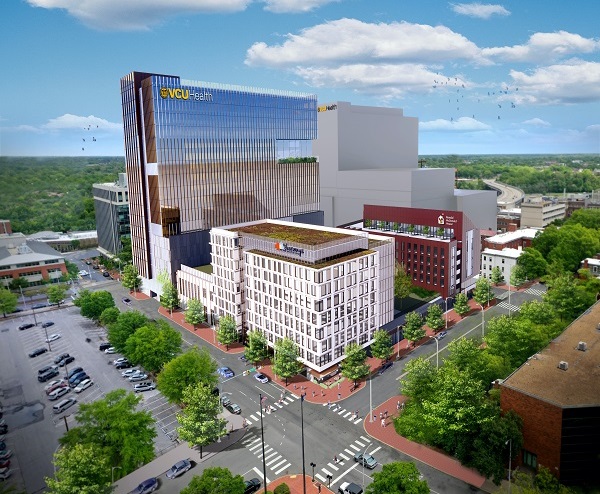
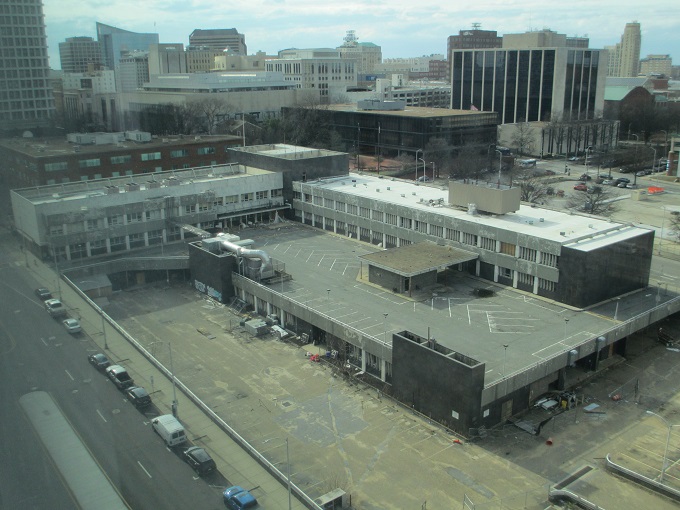
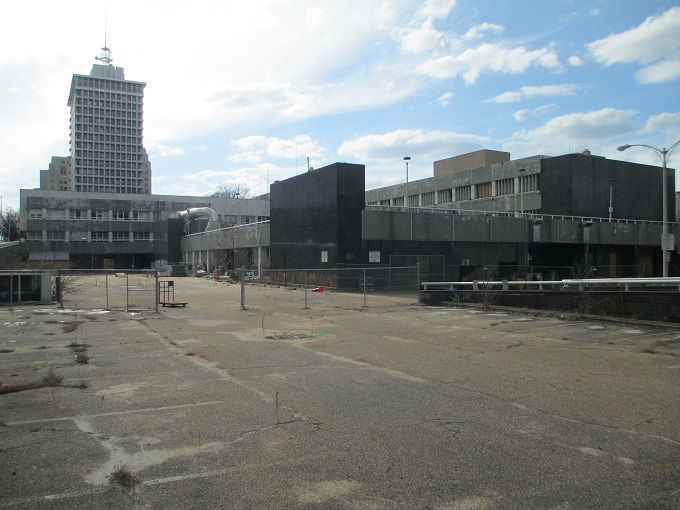
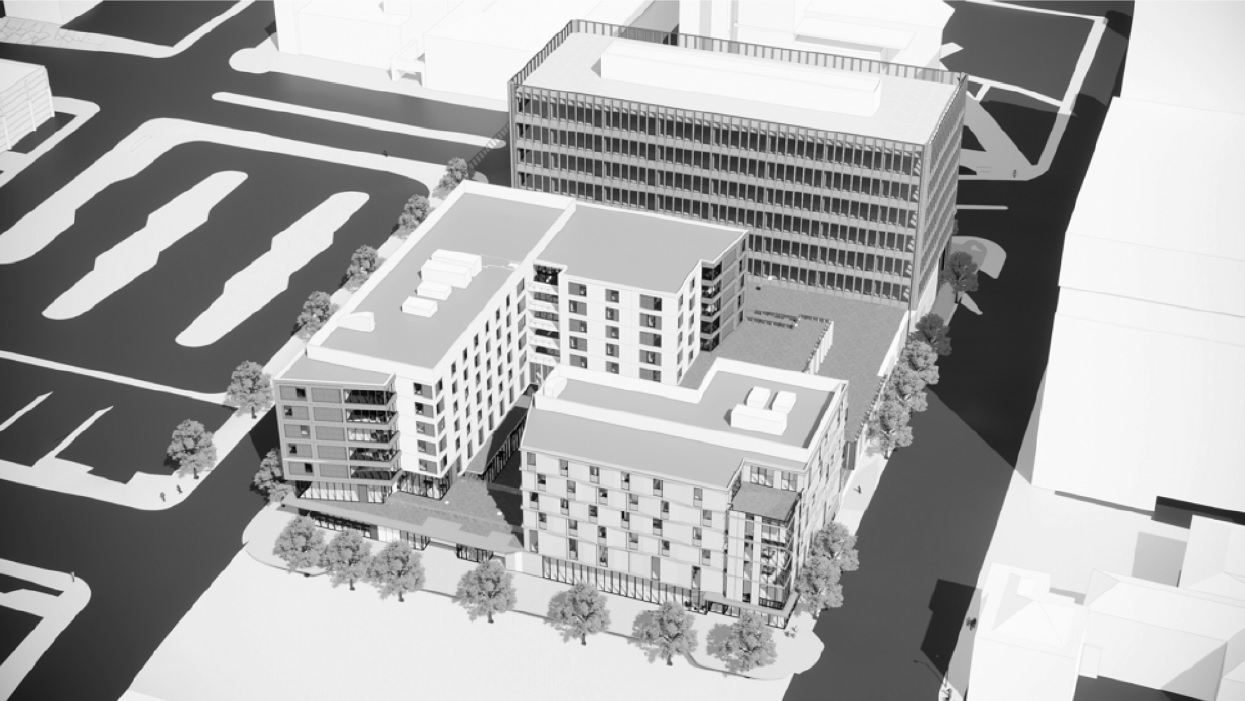
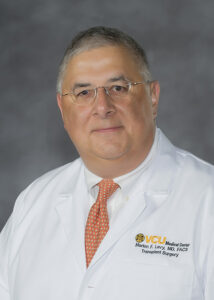
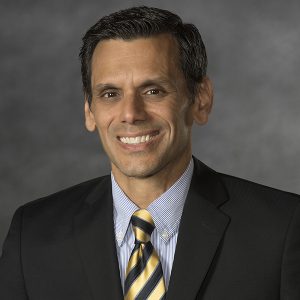
Loving all the in-depth reporting; it does appear in the long term that was probably the better financial decision for VCU to pull out. But what an overall crappy deal this has become for all parties except the developers and makes one question the details and financial plans of the Green City project.
Henrico better have a team of auditors reviewing everything on that Project.
I was hoping Jonathan would have an article on how Henrico is going to deal with this developer on the Green City project. After this fiasco, the Henrico residents deserve more transparency from Vithoulkas.
As a Richmond resident maybe I should set up a university and avoid paying property taxes – What a scam – a state entity pays taxes, but a state owned university avoids taxes!
“VCU’s Board of Visitors is seeking state funding approval for the (Dental) project”
Yes, the School did such a stellar job with the initial plan I cannot see why the State wouldn’t fork over another $400 million. Please!!
It just blows my mind that the health system is on the hook for property taxes on a piece of property they don’t own – were never going to own – and no one in the city administration seems bothered by it.
That answer is simple; the health system responsible because of their agreement with the developer. The city does not care who makes the PILOT payment but if the City had said “oh VCU is paying it, let us drop that requirement of the development deal” in the MIDDLE of working to push both the Diamond District and downtown development deals it would give more evidence that the City can’t even do the most basic development project. Now the City can show, even though deal fell apart, that the City is getting it promised revenue out of the initial deal. Pure… Read more »